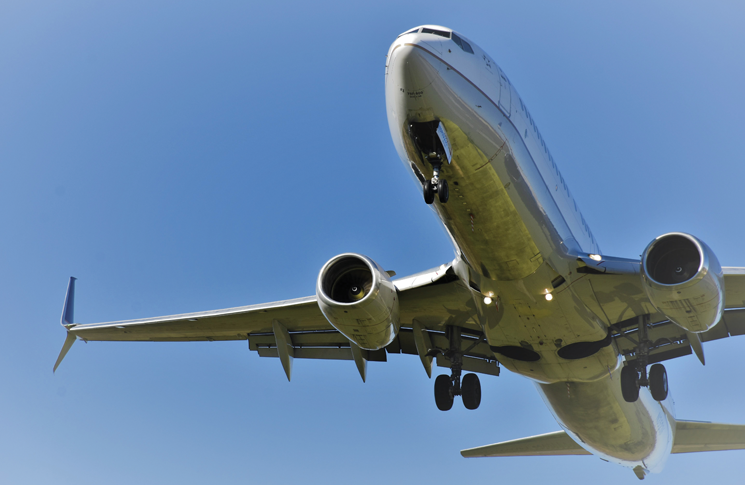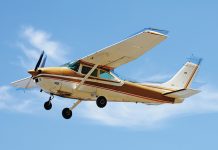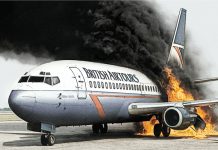The good old bad old days
The differences between general aviation and air transport aircraft may be vast, but both require airmanship for safe, efficient operation
I have flown both the Beechcraft Baron 58 and the Boeing 737NG. While I have more than 3500 hours as a captain on Boeing 737-700s, it took me 500 hours to feel like I owned the aircraft.
Perhaps I am not the sharpest knife in the drawer, just conservative and thorough. An airline executive once told me I was a ‘stubborn professional’. He meant it as a slight but I was honoured.
Can you operate a Baron to airline standards, though flying single pilot? Of course you can! The best place to start is to become thoroughly familiar with the contents of every page of the pilot’s operating handbook.
When reading the handbook, pay attention to aircraft manufacturer limitations, notes, cautions, warnings and the considerations given beneath each performance chart. Work through each of the performance charts to become familiar with what the aircraft can or cannot do. It is hard to argue with ‘doing it by the book’.
CRM for one
In general aviation, particularly among helicopter operators, crew resource management (CRM) is often dismissed as irrelevant for single-pilot operations, but it encompasses both specific and general safety practices, such as:
- having a torch with spare batteries and bulb that you can put your hands on, blindfolded, without fumbling
- having a Plan B or C when your Plan A is not working
- maintaining effective communication with other crewmembers, your student pilot, flying instructor, the flight examiner, passengers and ATC
- mitigating poor decision-making by recognising when you have a problem, defining what the problem is and identifying solutions.
Your solutions will most often be found in an abnormal or emergency procedures checklist, company standard operating procedures, aviation regulations or, failing all these, common sense. CRM applies to all aircrew.
Checklists for all
Reading from checklists is surely a sign of professionalism. Normal checklist items are too easily forgotten when they have been committed to memory, especially when not familiar with an aircraft or its checklists and distracted from its operation at the wrong moment.
So, just as you would aviate, navigate, then communicate in a Boeing, you should prioritise handling any abnormal situation in a GA aircraft the same way. You should be able to immediately turn to Section III Emergency Procedures for the Baron. It would be worth studying the emergency procedures before you take your next cross-country flight or next MECIR renewal. For example, you should be able to recite the emergency airspeeds, one-engine operation, determining inoperative engine, engine fire in flight and the immediate actions.
Performance and energy management matters in multi-engine aeroplanes of any size, but more so in smaller aircraft. As Civil Aviation Advisory Publication CAAP 5.23-1(2) states, ‘Power loss in a light multi-engine aircraft is a problem that requires good management. The asymmetric climb performance in such aircraft is not guaranteed as it is in the case of larger multi-engine aeroplanes, such as a Boeing-737. At high density altitudes, a heavily laden GA aeroplane or one with a load of ice, may not even be able to climb following an engine failure after take-off’.
Astronaut Chris Hadfield’s question, ‘What’s the next thing that could kill me?’ is a good one to ask yourself.
How many pilots have you seen put everything but the kitchen sink, plus passengers, into an aeroplane? It may not be a problem departing from a 2700 m runway on a 15-degree day but, on that same runway, the Baron would struggle during climb on a 44-degree day even with 2 engines operating – you would have no option but to go off the end of the runway or put the aircraft into whatever lies beyond the clearway, should an engine fail between 84 knots andYSE (best rate-of-climb speed with one engine inoperative).
Stability discipline
Another airline pilot discipline you should employ when flying a Baron or any other GA aeroplane is always make a stabilised approach.
A leading international aviation insurance company reported in 2014 that 57% of accidents occurred during the descent and landing phase.
An ATSB report quotes Boeing statistics of ‘33% of fatal accidents occur during the final approach and landing phase of flight’. The US Federal Aviation Administration cites 45 per cent. Regardless of the number, there is a single common denominator – pilots – regardless of age, level of experience or aircraft. Oddly, it seems the more flying experience a pilot has, the more likely the pilot will be among those statistics.
Astronaut Chris Hadfield’s question, ‘What’s the next thing that could kill me?’ is a good one to ask yourself.
When a pilot is flying a transport-category jet like a Boeing 737-800, it is almost a religious mantra to constantly consider performance and energy management. This saves fuel, reduces noise on departure and approach or when an engine fails; however, a pilot flying a Baron should be no less conscientious. I might also offer the following advice: keep everything as ‘normal’ as possible when faced with an abnormal or emergency – less to think about.
Some differences between flying a Beechcraft Baron and a Boeing 737NG are worth considering. A reciprocating engine has instant power and thrust – or should have – when you push the throttles forward. For a small amount of movement with a constant rpm, you get an immediate increase of manifold pressure and thrust. But in a CFM56‑7B high bypass ratio turbofan engine, the thrust levers need to be moved significantly more than
a piston engine and engine acceleration is slower. Thus, a pilot must anticipate power changes and manage them better.
If a jet is very close to the runway and a vehicle darts across its path, it would likely take several seconds before the aircraft would be away and would likely touch down before going round. However, under a similar scenario, a Baron would fly away without hesitation.
I hope you strive to be above average – that is the only path to qualification on complex high-performance aircraft. There are no short cuts.
Differences
Baron
- can be slowed in flight by its propellors
- power instantly available
- good cockpit external visibility
- subject to torque, P-factor and other aerodynamic effects on take-off
- generally stable in flight but subject to centre-of-gravity influence if improperly loaded
- energy/airspeed management most critical on take-off.
Boeing
- aerodynamically clean
- engines require time to spool up
- limited external field of view
- relatively easy to keep straight on take-off
- pitch sensitive at high speed and altitude
- energy/airspeed management most critical on approach/landing.






Comments are closed.